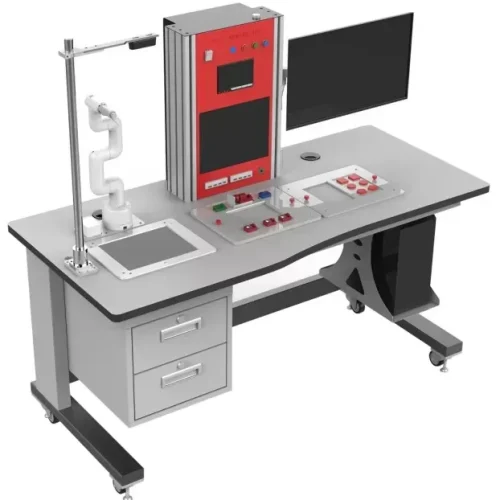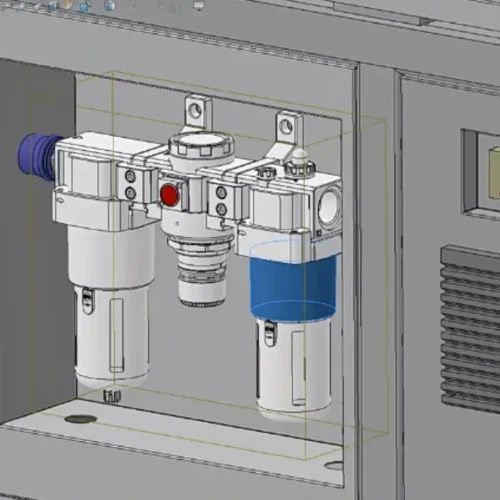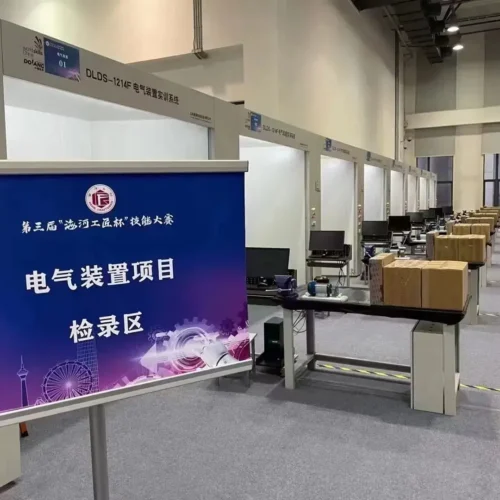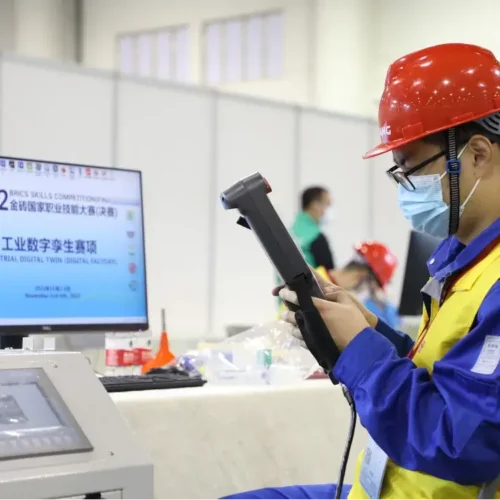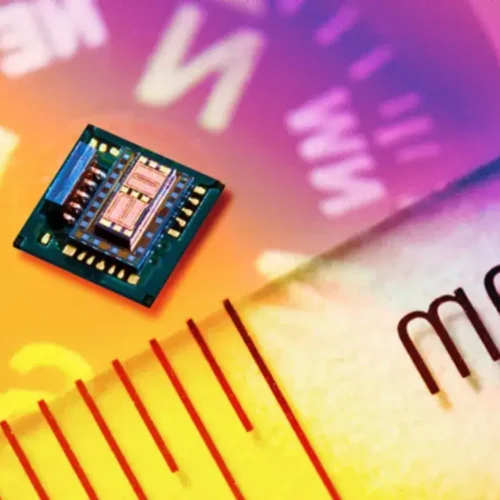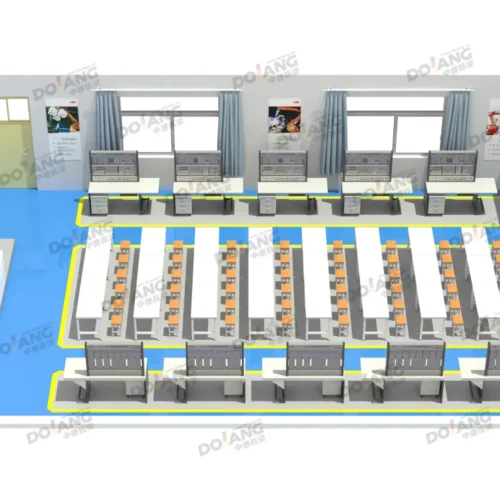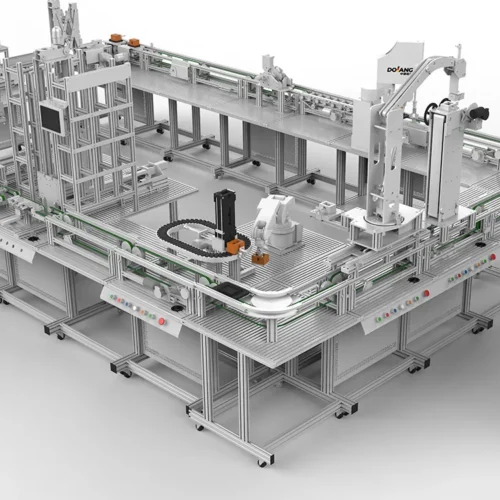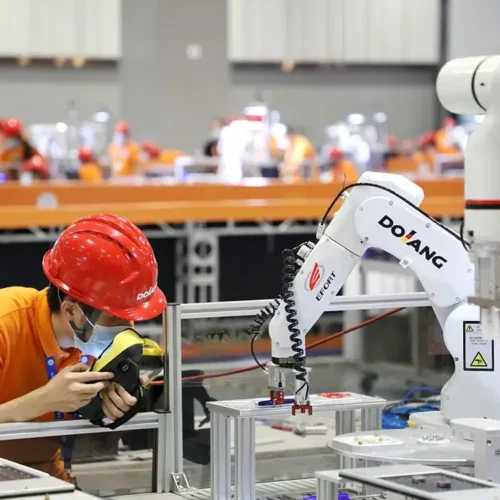The rapid strides made in the technological sphere are mindboggling. Just a couple of centuries back, we saw the introduction of innovations like the power loom. Now we have passed the second and third industrial revolutions and entered into the fourth, which focuses mainly on innovative automation.
While the earlier digital revolution used computers they needed human control. Now with Industry 4.0, automation has entered new levels. Knowing what is Industry 4.0 and the various Industry 4.0 solutions can help in the enhanced growth of the sector.
What is Industry 4.0?
Industry 4.0 or the fourth industrial revolution denotes the digital transformation of the manufacturing industry enabling real-time decision-making. Improved productivity and flexibility are possible.
Computers can now gather data, optimize results, and make decisions without human intervention. Industries now rely less on manual power and more on smart machinery for better results. To aid industries in this endeavor, the Dolang Industry 4.0 systems serve as a capable tool. Read on to know more about the technologies that can impact industries now.
Technologies influencing Industry 4.0 revolution
Here are four key technologies that power the Industry 4.0 revolution. They help in achieving high efficiency and success levels.
Big data analytics
Industries have access to huge amounts of data from various sources now. In such a situation, big data analytics has become a key technology to use. The technology used relies on the size, sector, and access that a business has to resources. Companies gain immensely with data analytics in the ways mentioned below:
- Reduced costs due to cost-effective storage of data.
- Reduced waste of time and effort by identifying inefficiencies and fixing them.
- By efficient analysis of data, industries can make quicker and better decisions. The availability of real-time information enables accurate decision-making.
- Companies can create innovative and improved products and solutions. This is because analytics helps identify customer needs and make the changes needed.
Many industries including retail, healthcare, banking, transportation, and more have gained from data analytics.
3D printing
3D printing also termed additive manufacturing has seen quick growth in the past few decades. While it served as a rapid prototyping tool earlier, now it has other uses. Functional and visual prototypes, tooling aids, end-use parts, and more use the technology.
Now 3D printing is vital for new product development and large-scale production. It can be further leveraged to shorten development cycles and make them efficient. Some of the main industries that use 3D printing now include:
- Consumer electronics
- Aerospace
- Automotive
- Healthcare
- Robotics and more.
In the manufacturing industry, full-scale production occurs using 3D technology. A blend of 3D printing and CNC machining helps in producing custom-made parts. This reducing manufacturing costs, waste, and carbon footprint.
Digital Twins

Digital twin technology involves the automated representation of a service, object, or device. For instance, the digital twin can be a copy of a wind farm, building, jet engine, and more. The copy is a blueprint or virtual representation of the working mechanism of an IoT device.
Digital twins are computer programs that create simulations. They use real-world information to predict the efficacy of a product or service. Creating a virtual model via digital twin technology helps in many ways such as
- Improve the efficacy of the product
- Prevent expensive failure of physical products
- Use predictive skills, advanced analytics, testing, and monitoring effectively.
A digital twin acts as a prototype to provide an assessment of a product that is in the development stage. Or, it can work as a separate prototype to track processes that occur in the physical format.
Industrial Internet of Things (IIoT)
The IIoT comprises of ecosystem that has sensors, devices, applications, and other related tools. They collaborate to gather, track, and analyze information related to industrial processes. With the analysis the technology provides
- Increased visibility
- Improved troubleshooting capability
- Better maintenance
- Increased efficiency and reduced costs
- Improved safety
How industries benefit from IIOT
Organizations gather huge amounts of actionable data. They aggregate and assess them resulting in better operation control. The process achieves improved employee safety and higher production time by
- Predictive maintenance of equipment
- Product quality maintenance
- Enhanced efficiency
- Ensuring regulatory compliance.
The technology helps to achieve accelerated response time. It provides real-time collection and processing of operational information.
Industry 4.0 training courses and systems: The best way to leverage technologies influencing Industry 4.0.
With the diverse benefits provided by the technologies using them optimally can transform the future of the manufacturing industry. Proper training in using the technologies is a big step towards integrating them into industrial processes. Training provides benefits such as
- Allows acquisition of information, tools, and methods to use Industry 4.0 effectively across various industries
- Explore the changes brought by the technology to existing systems
- Observe the vital components and explore their impact on enhanced manufacturing.
The Dolang digital Industry 4.0 training systems help use the technology in all manufacturing sectors. They consist of models of industrial tools that help to teach the technology Industry 4.0.
With the training equipment, deep integration occurs in all stages of the operations. You get to learn related technologies like robotics, sensor, frequency control, PLC, etc.
When used by workers and students, the training systems help in embracing the new technologies in a simple and objective way. The equipment comes with advanced software that can provide real-time information and analytics.
Conclusion
The technologies that drive the Industry 4.0 revolution are vital for industries. They help them be competitive and reach a high level of efficiency. They can help organizations reach capabilities that were difficult to achieve earlier.
Further access to extensive data allows the industry to meet robust security. Improved productivity and successful achievement of manufacturing goals are possible. You can get top-quality hands-on experience using the Dolang training systems.
The equipment can connect theoretical knowledge with practical skills. Using the Dolang Industry 4.0 training systems will make trainees industry-ready.
The systems cover smart factories, digital twin technology, robotic computer-integrated manufacturing, and handling system, and many more. Is your organization considering using Industry 4.0 training program? Try the Dolang training equipment. It is an ideal choice to start with.




